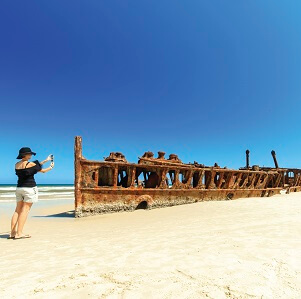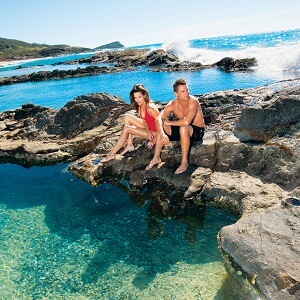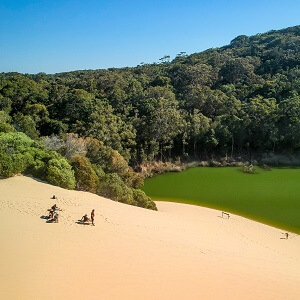Australia’s wild outback canine may look cute, but is completely different from our beloved pets!
Dingoes are Australia’s wild dogs. Found roaming around almost all of Australia, in a range of different habitats including dessert lands, tropical regions, and open grasslands. They are an iconic and beloved animal as the country’s only native canine. They also hold a significant place in the spiritual and cultural practices of many Aboriginal communities. Fraser Island is home to some of the purest of breeds and is an incredible attraction for tourists when visiting.
Facts about Dingoes
Dingos are wild dogs that roam the Australian bushland. With sandy brown fur, their average size is similar to a medium-size domestic dog. Despite being mistaken for a type of dog, they, in fact, do not bark and actually howl similar to wolves.
The Threat of Dingoes
Dingoes may look like a regular domestic dog, but they are a lot more dangerous than the average house pet. Many incidents have occurred over the years regarding dingo attacks. With organised culling of the island’s population, as well as the development of the Dingo Management Strategy in the late 1990s. A 9-year-old boy was killed by a dingo after he was chase due to holding food and tripped and fell after trying to flee. His brother who was at the scene escape but had to be airlifted due to severe injuries. Nowadays there are numerous warnings signs on the island as well as guides who continue to warn you of the risks regarding dingoes.
Their Historic Interactions with Humans
Despite the danger of dingoes nowadays, the past history of dingoes hasn’t been a very threatening one for humans. When Captain Fraser arrived on the island, there were many stories regarding the island from Fraser, Fraser’s wife, and the crew members. However, no stories contain any danger regarding dingoes. With no actual reports of dingo attacks until the 1990s when dingo behaviour drastically changed. This was mainly due to visitors feeding dingoes. This was always done throughout the years, but instead of throwing scraps towards the dingoes, tourists started to entice dingoes to eat out of their hand for a photo opportunity. This made the dingoes lose their fear for humans, making them much bolder and therefore more dangerous.
The Purity of the Dingoes
Over the years the introduction of domestic dogs has resulted in crossbreeding to occur between dingoes and domestic dogs. This has, in fact, lessened the dingo’s purity, with dingo and dog mixes growing compared to pure dingo species. Fraser Island is home to the purest dingoes alive as no other dog types are allowed on the island. There are only around 25 to 30 packs on the island, with each comprising 3 to 12 dingoes. Due to this small group, inbreeding has begun to take its toll on the island’s dingoes.
How to see them
A large portion of tourists thinks of dingoes as friendly dogs with similar behaviours to pets. This, of course, is not the case and have led to numerous attacks and incidents over the years. Strict rules have been set in place on Fraser, including no feeding or no approaching the animals. They are very cunning and fast, so keeping a close eye on any that are nearby is always a good idea. If travelling with children, always make sure there is one adult with them at all times, as dingoes are more likely to attack smaller children.
Explore Our Fraser Island Tours
-
1 Day Fraser Island Tour Depart Hervey Bay
Destination: Fraser Coast
Duration: 1 Day
Tour type: Day Tour
Available Now
From $273
-
1 Day Fraser Island Tour Depart Rainbow Beach
Destination: Fraser Coast
Duration: 1 Day
Tour type: Day Tour
Available Now
From $273
-
2 Day Fraser Island Tour Depart Hervey Bay
Destination: Fraser Coast
Duration: 2 Days
Tour type: Short Break Tour
Available Now
From $699
-
2 Day Fraser Island Tour Depart Rainbow Beach
Destination: Fraser Coast
Duration: 2 Days
Tour type: Short Break Tour
Available Now
From $699






